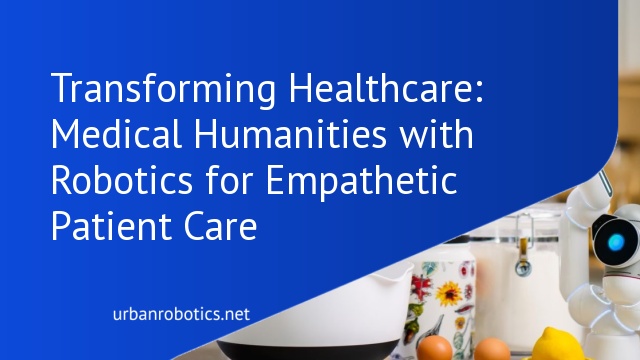Understanding Medical Humanities
Medical humanities blend arts, ethics, and social sciences to deepen our understanding of medicine. This interdisciplinary field ensures healthcare remains patient-centered and humane.
Definition and Scope
Medical humanities encompass literature, philosophy, ethics, history, and arts in studying medical practice. This scope extends to understand patient experiences and cultural contexts. For example, literature provides insights into patient narratives, while ethics guide our moral decisions in treatment. Educators and practitioners alike utilize this knowledge to foster empathy and holistic care in medical settings.
Historical Context
The formal integration of humanities in medical education began in the 1960s. Programs incorporating arts, ethics, and social sciences emerged, recognizing the importance of a well-rounded approach to patient care. For instance, the rise of bioethics in the ’70s highlighted the need for ethical considerations in medical decisions. This historical shift has laid the foundation for today’s emphasis on balanced, empathetic healthcare practices.
The Role of Robotics in Medicine
Robotics is revolutionizing medicine by enhancing precision, improving patient outcomes and increasing efficiency. By integrating advanced technology, we’re transforming healthcare in unprecedented ways.
Key Innovations
Key innovations in robotics have led to significant advancements in medicine. Surgical robots, like the da Vinci Surgical System, allow for minimally invasive procedures, reducing recovery times and complications. Rehabilitation robots aid in physical therapy by offering personalized and consistent exercise regimens. Telepresence robots enable remote consultations and examinations, bringing medical expertise to underserved areas. These innovations highlight how robotics is enhancing medical capabilities and improving patient care.
Current Applications
Current applications of robotics in medicine span various fields. In surgery, robotic systems perform delicate operations with precision. In diagnostics, robotic imaging technologies provide accurate and detailed scans. In elder care, assistive robots offer support with daily living activities and improve the quality of life for seniors. Additionally, robots are used in sterilization processes to maintain hygiene standards in healthcare facilities. These applications demonstrate the broad impact of robotics across different dimensions of medical practice.
Intersection of Medical Humanities and Robotics
The merger of medical humanities with robotics offers innovative approaches to patient care. This section explores how ethical considerations and human-robot interactions are integral to this convergence.
Ethical Considerations
Ethical considerations in medical robotics ensure technology aligns with human values. Robots must uphold patient dignity, maintain confidentiality, and make unbiased decisions. Effective guidelines and regulations are critical, focusing on informed consent, liability, and equitable access to ensure robots enhance care ethically. Addressing these issues helps in building trust and acceptance among patients and healthcare providers.
Human-Robot Interactions
Human-robot interactions aim to create empathetic, intuitive relationships between patients and robotic caregivers. Robots, like assistive companions, must interpret non-verbal cues and respond appropriately to emotional states. Enhancing oral communication methods ensures that robots can provide comfort and support while reinforcing therapeutic efficacy. Positive interactions enhance patient experience and foster a sense of companionship, even in high-tech settings.
Case Studies and Examples
Merging medical humanities with robotics has led to remarkable breakthroughs in patient care. Here, we explore successful implementations and challenges faced in this dynamic field.
Successful Implementations
Robotic-assisted surgery has revolutionized procedures by enhancing precision. For example, the Da Vinci Surgical System allows surgeons to perform minimally invasive surgeries with greater accuracy, reducing recovery times. Rehabilitation robots like Lokomat assist in physical therapy, improving patient mobility post-injury. Companion robots such as Pepper foster emotional well-being by engaging patients in conversations and activities, offering crucial support in eldercare settings.
Challenges Faced
Integrating robotics with medical humanities presents unique challenges. Ensuring robots interpret non-verbal patient cues accurately requires advanced AI and machine learning. Maintaining patient confidentiality is critical, needing robust cybersecurity measures. Ethical dilemmas also arise, such as balancing technology use with preserving the human element in care, ensuring patient dignity, and preventing biases in decision-making systems.
Future Perspectives
The future of integrating medical humanities with robotics looks promising and transformative. We’re focusing on advancements that foster a deeper connection between technology and compassionate care.
Potential Developments
Robotics in medicine is evolving, with potential developments including AI-driven diagnostics, personalized robotic care, and advanced surgical assistance. For instance, AI can enhance diagnostic accuracy and predict patient needs. Moreover, personalized robotic care could cater to individual patient preferences, enhancing comfort. Advanced surgical robots may perform complex procedures with greater precision than current models, reducing recovery times and increasing success rates.
Impact on Healthcare
Integrating robotics with medical humanities can revolutionize healthcare. We’re seeing improvements in patient outcomes and overall care quality. Robotic caregivers offer consistent support, reducing strain on healthcare staff. Moreover, robotic systems improve surgical accuracy, leading to fewer complications. Ethical considerations from the medical humanities ensure that robotics enhance, rather than replace, human empathy and care. This balanced approach can foster trust and improve patient satisfaction.
Conclusion
The integration of medical humanities with robotics is more than just a technological advancement; it’s a paradigm shift in healthcare. By blending ethics, empathy, and cultural understanding with cutting-edge technology, we’re creating a future where robots enhance rather than replace the human touch. This approach ensures that patient care remains compassionate while benefiting from increased precision and efficiency.
As we continue to explore AI-driven diagnostics and personalized robotic care, the potential for improved patient outcomes and reduced strain on healthcare staff becomes even more apparent. The promise of this integration lies in its ability to foster trust, uphold patient dignity, and deliver unbiased decision-making. We’re on the brink of a transformative era in healthcare, one that combines the best of humanity and technology to revolutionize patient care.





